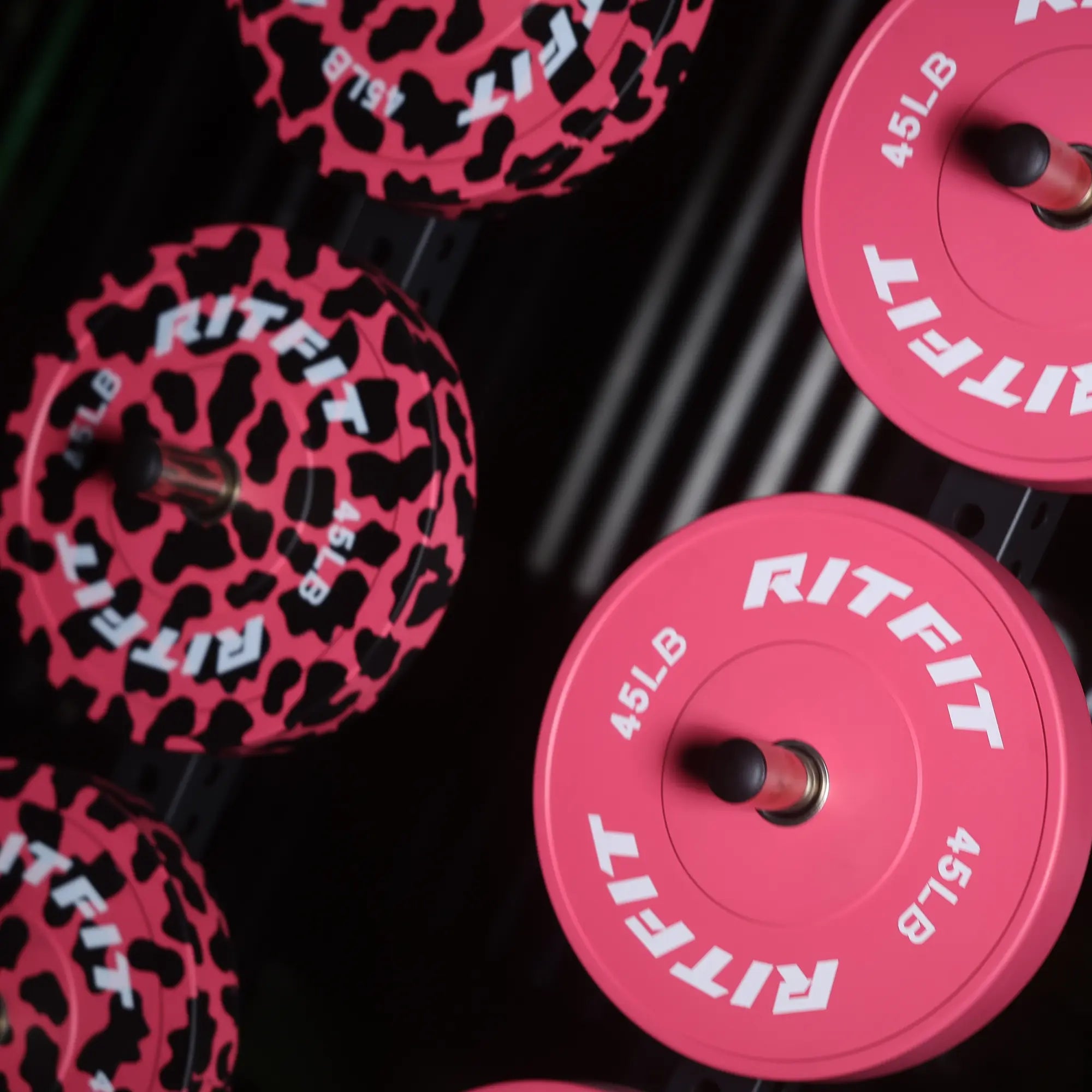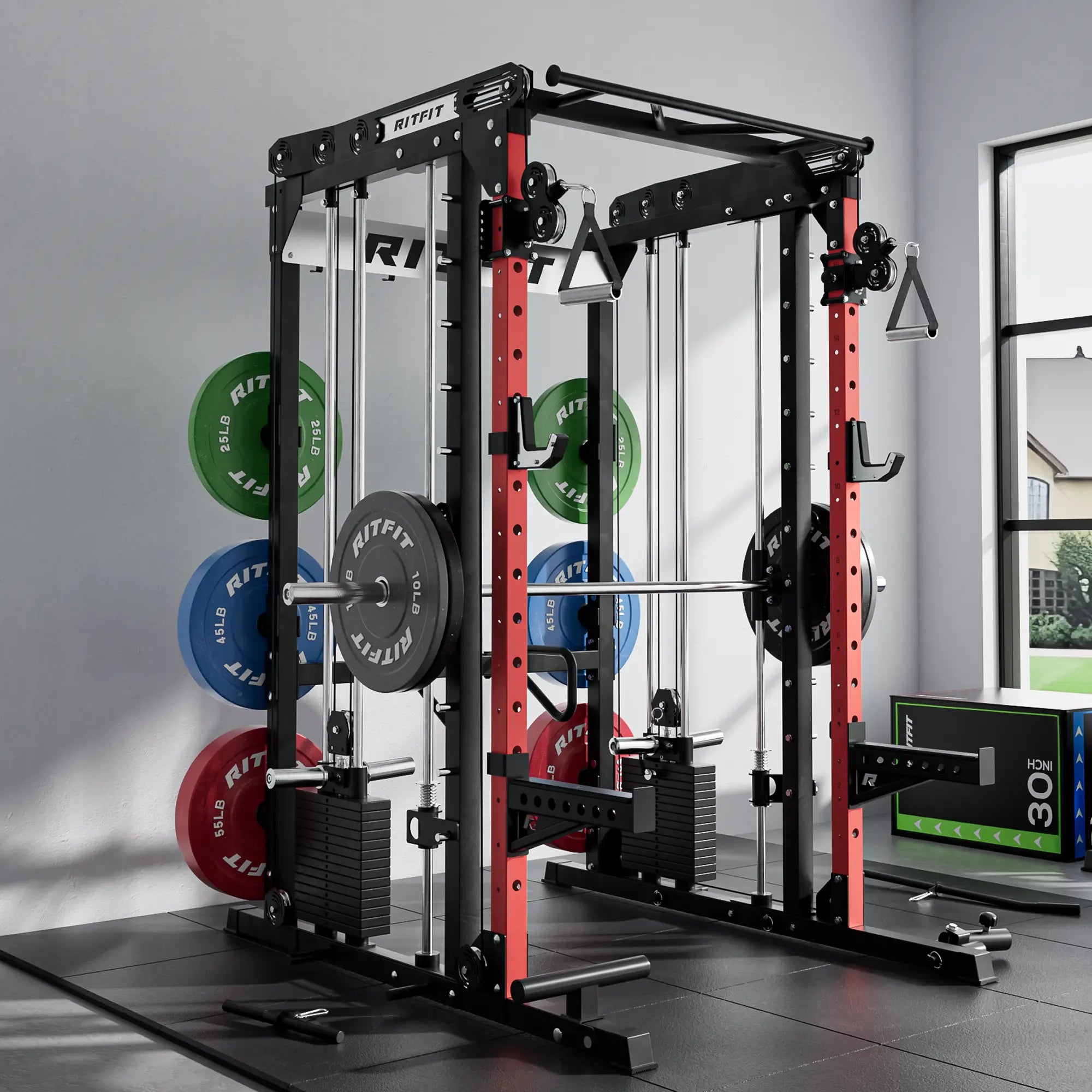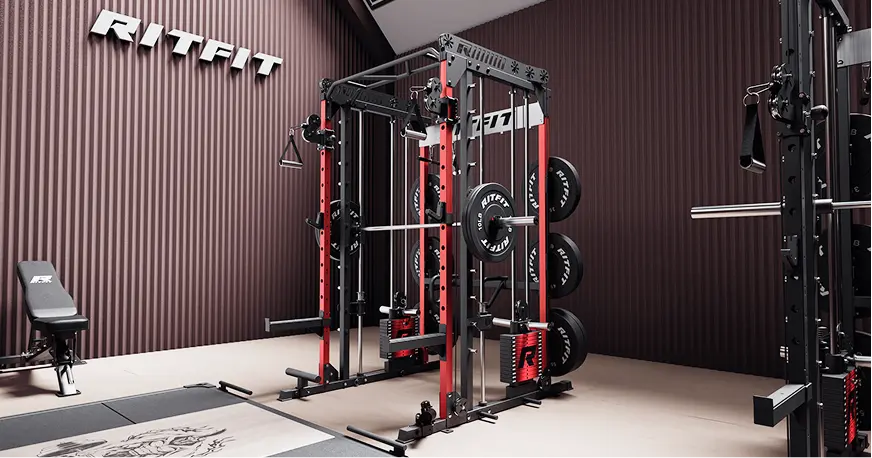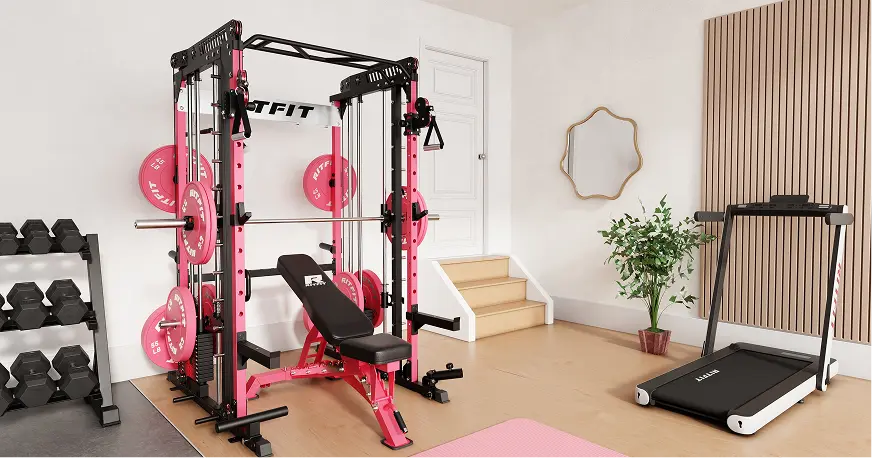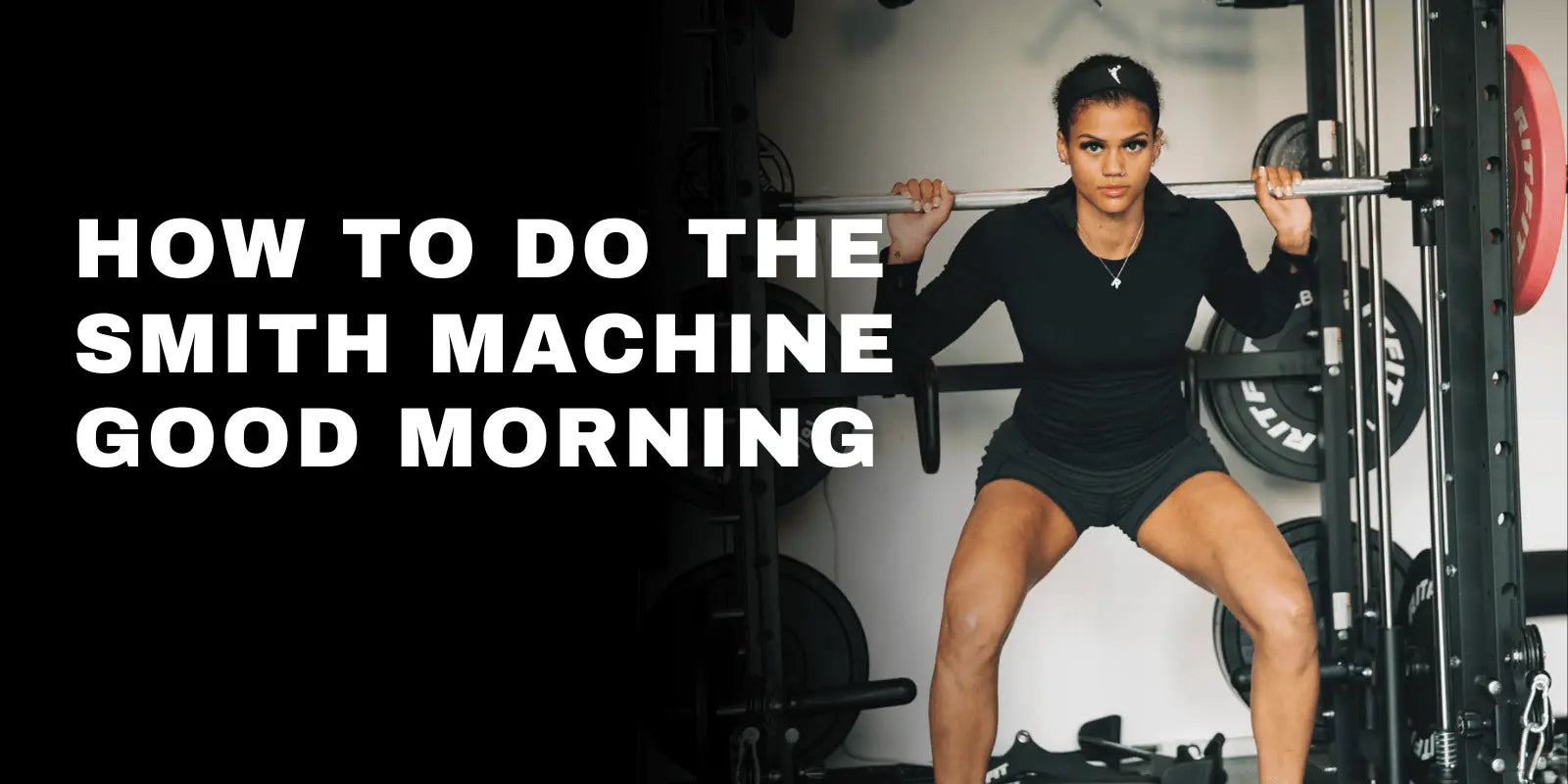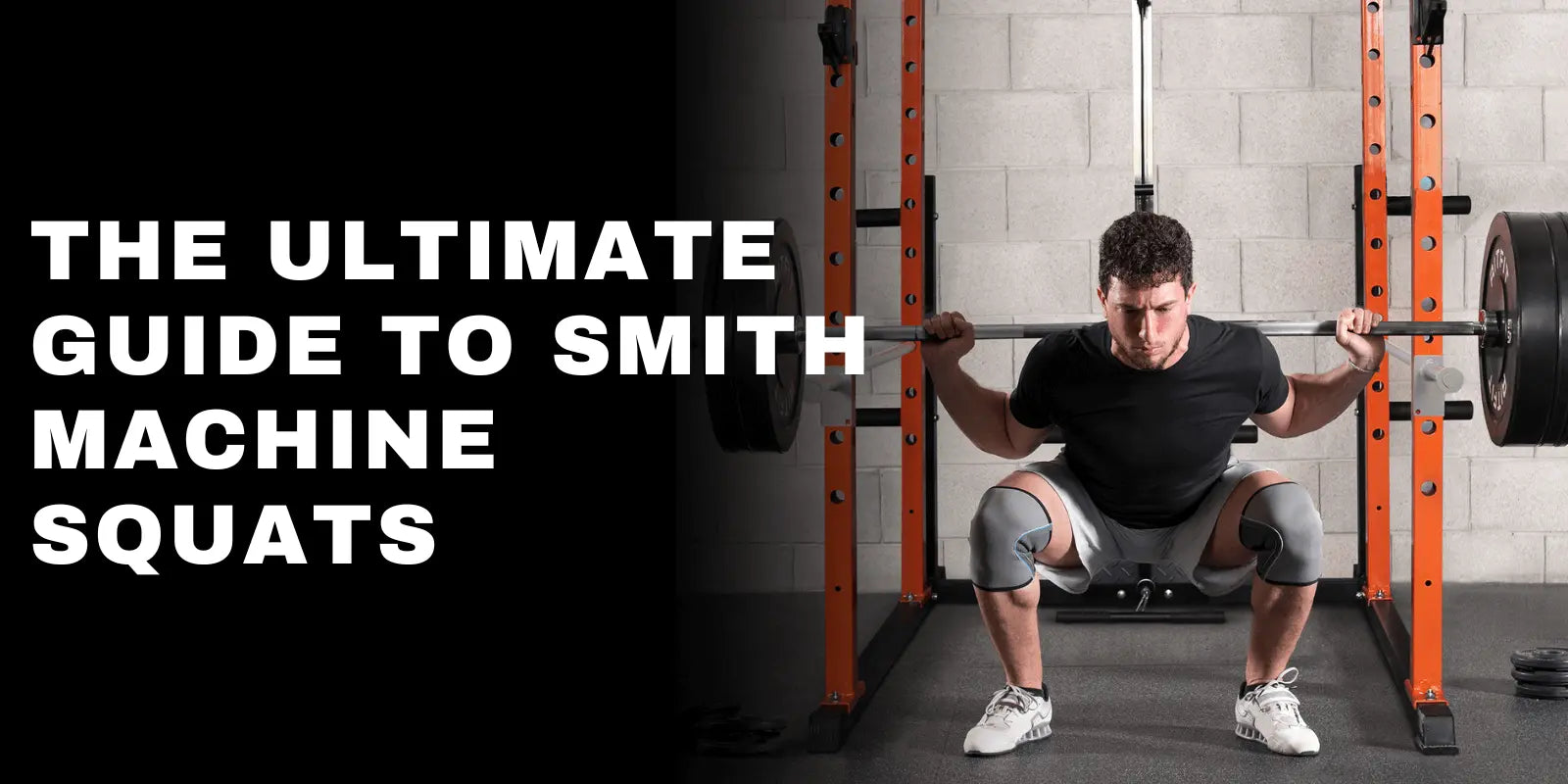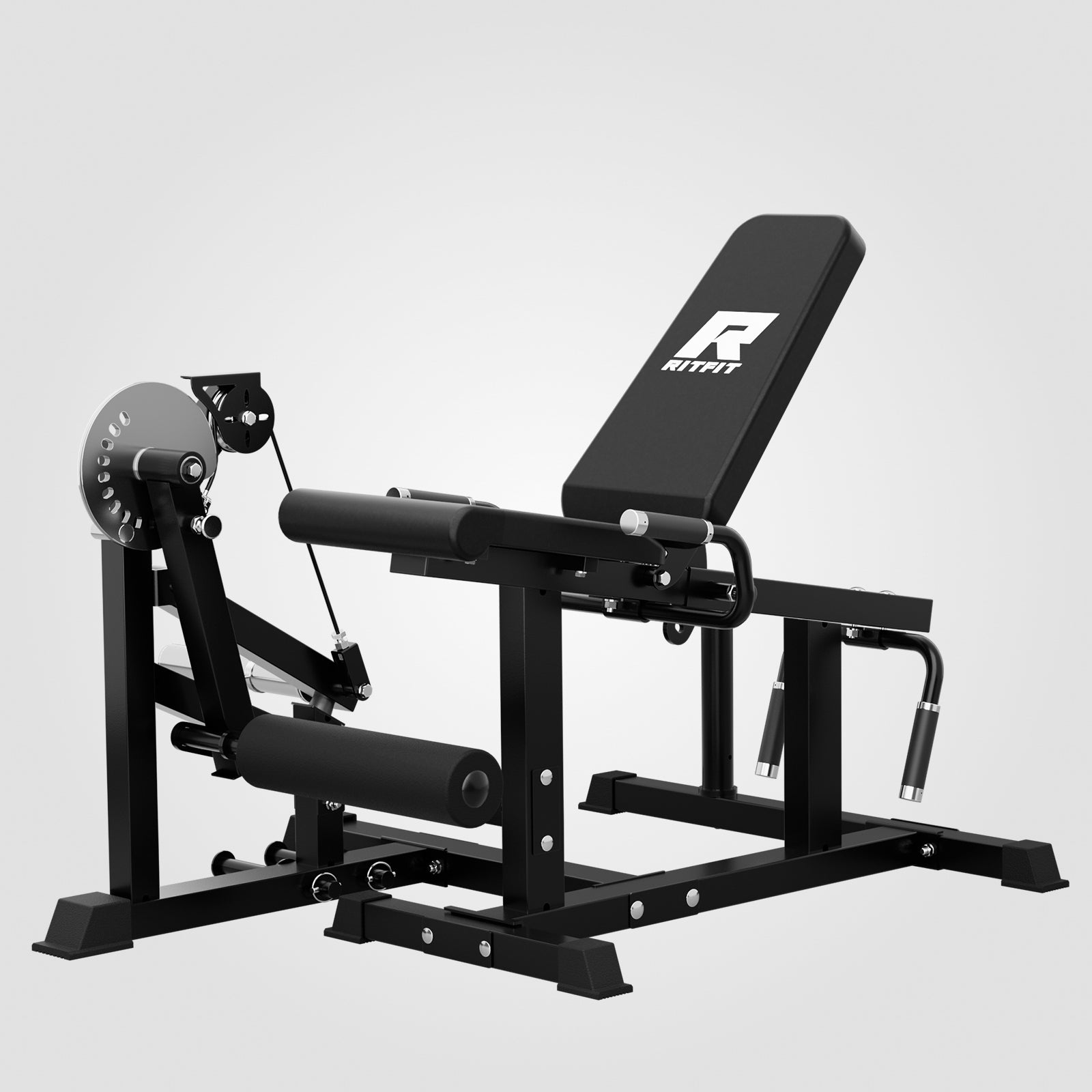Deep down, you know the truth.
You. Can't. Skip. Leg. Day.
Fair enough, right? But sometimes leg day can get a little…boring.
We get it, and we know you've already tried some of the most popular lifts during the most intense session of the week.
Hack squats and leg presses are great for working the entire lower body, especially if you have access to a machine that lets you do both.
The almighty back squat is always on the table, but what if you want to "spice" things up a bit while still building tree trunk-sized legs?
Thankfully, the Smith Machine squat muscles worked are just as extensive. Its added benefits (safety, beginner-friendly, intense focus) make it one of our favorite leg day go-tos.
If you're not Smith Machine squatting, you should be. Today, we're gonna tell you why.
What is the Smith Machine Squat?
As its name implies, the Smith Machine squat is a variation of the traditional barbell back squat. The movement is very similar to its free weight counterpart and is considered a training staple among many fitness enthusiasts.
Smith Machines are designed to keep the Smith Bar and loaded plates in constant balance while also promoting a completely vertical bar path. These qualities make it extremely difficult not to squat with perfect form (Gutierrez & Bahamonde, 2009).
Smith Machine Squats Muscles Worked
Like most squatting movements, the muscles worked in Smith Machine squats are numerous. They primarily work the quads and glute muscles. These are the largest and most powerful lower-body muscle groups, making this exercise particularly important and efficient for muscle-building purposes.
Smith Machine squats are highly effective at working several secondary muscle groups, including the hamstrings, adductors (the muscles of the inner thighs), and the calves. The stabilizing muscles of the core and erector spine are also involved, but not to the extent that they are during conventional barbell back squats (Schwanbeck, Chilibeck, & Binsted, 2009).
Smith Machine Squat Benefits
As we just discussed, Smith Machine squats share many of the same muscle and strength-developing benefits of other squatting movements. However, the fixed path of the barbell and built-in balance really help to maximize these benefits:
Heavier Sets
You can load more weight than you would when squatting from a power rack and never need to worry about finding a spotter.
Perfect Form
You can more easily maintain perfect form throughout the duration of each lift and can easily rerack the weight when approaching failure. These advantages lead to more consistent, heavier squats with perfect form (Morton et al., 2016).
Significant Muscle Growth
Want to know the benefits of consistent Smith Machine squatting? Significant muscle growth, reduced strain in the lower back and knees, and increased confidence in executing all squatting movements. The only downside is you'll wonder why you didn't start Smith Machine squatting sooner!
How to do Smith Machine Squats
Like most exercises, being mindful of your setup is a major factor in determining how well your set will go. Let's discuss the ideal pre-squat sequence and perfect Smith Machine squat execution:
- Setting the bar to an appropriate starting height is arguably the most important pre-squat activity. You should set it at a level where, upon entering the machine, you do not need to "reach" or "stretch" up to rest it on your shoulders. Setting the bar height slightly lower is preferable to setting it slightly higher.
- If you're performing Smith Machine squats for the first time, start by loading the bar with a weight that is very manageable for you. If you're a brand-new lifter, using an empty Smith Bar may be appropriate. However, most trainees should use at least a small amount of additional weight in order to receive some "feedback". This is important for maintaining proper form and is more difficult to discern with unnaturally low loads.
- Once your load and bar heights are set, you're ready to squat. Enter the machine and position the bar evenly across your shoulders. Gently shrug your shoulders up as you twist your hands back on the bar to release it.
- In a slow and controlled manner, squat down, maintaining an upright posture and a consistent, straightforward gaze. Descend until your hips are just below the tops of your knees and immediately rise back up until you have reached the starting position.
- When you have completed your set, shrug your shoulders forward and gently rerack the Smith Bar.
If you are just starting out with Smith Machine squats, keep the weight and reps low. Getting used to the feel of the movement as you perfect your technique is the most important thing at this stage.
What's the Difference Between Conventional Barbell Back Squats and Smith Machine Squats?
The conventional barbell back squat (AKA the "King of Exercise") is renowned for its lower body muscle-building prowess. It is a free-weight exercise and requires you to balance and control the weight completely on your own.
Developing the balance and body awareness necessary to control the barbell in this movement directly leads to increased functional strength, core strength, and neuromuscular coordination. However, perfecting your form takes time, and it can be a particularly difficult movement for new trainees and those without access to spotters.
In contrast, Smith Machines keep the bar perfectly balanced at all times, making it much easier to control. Spotters are almost never necessary with Smith Machine squats, and form is perfected from the very first rep (Gutierrez & Bahamonde, 2009).
Smith Machine Squat Variations
It never hurts to experiment with movement variations, especially when your options are as legit as Smith Machine squat variations:
Smith Machine Split Squat
The Smith Machine split squat is the most popular and arguably most effective Smith Machine squat alternative. It is a unilateral (the focus is on one leg) movement that shares the lower-body strength and muscle-building aspects of Smith Machine squatting.
If you have a muscle imbalance, Smith Machine split squats allow you to use different loads on each leg to correct it or even to rehab a temporarily weakened leg.
Smith Machine Front Squat
Rather than holding the Smith Bar on the upper back, when performing Smith Machine front squats, it is held in the "front rack" position. This position places a greater emphasis on the quads, making them this variation's undisputed "heavy lifters".
If you're truly ambitious, we recommend giving these variations, as well as Smith Machine Bulgarian split squats and Smith Machine tempo squats, a try. One thing is for sure: you'll be hard-pressed to run out of good Smith Machine squat variations!
The Most Common Smith Machine Squat Mistake
If you have a powerlifting background, you might inadvertently make the most common Smith Machine squats mistake.
Trying to "low-bar squat"
Low-bar back squatting is an extremely effective way to move more weight when using free weights. However, the Smith Machine does not allow for any curvature or bar arc. This almost always results in one of two things happening…and neither one is good:
- Leaning further forward to compensate (which puts significant strain on your lower back)
- Forcing the torso upright, which pretty much negates the main benefit (hip-drive assistance) of the low-bar squat
Uneven foot placement and not hitting depth are two other very common mistakes, but these apply to all kinds of squatting. Low-bar squatting can be an excellent approach…but in the Smith Machine, it's always a mistake.
Are Smith Machine Squats Good Leg Day Exercises?
If you're still asking, "are Smith Machine squats good leg day exercises?"…we really don't know what else to tell you.
They're safe.
They facilitate perfect form.
They hit all of the lower-body muscles.
They have a number of variations that make them even more functional.
At this point, you could only really doubt them if you were looking for an excuse to skip leg day…and you would never do that…
…right?
References
- Gutierrez, A., & Bahamonde, R. (2009). Kinematic analysis of the traditional back squat and Smith Machine back squat exercises. Proceedings of the 27th International Conference on Biomechanics in Sports.
- Morton, R. W., Oikawa, S. Y., Wavell, C. G., Mazara, N., McGlory, C., Quadrilatero, J., … Phillips, S. M. (2016). Effect of different modes of strength training (free weights vs. machines) on maximal strength, muscle mass, and hormonal responses: A meta-analysis. Sports Medicine, 46(11), 1735–1751.
- Schwanbeck, S., Chilibeck, P. D., & Binsted, G. (2009). A comparison of free-weight squat to Smith machine squat using electromyography. Journal of Strength & Conditioning Research, 23(9), 2588–2591.


